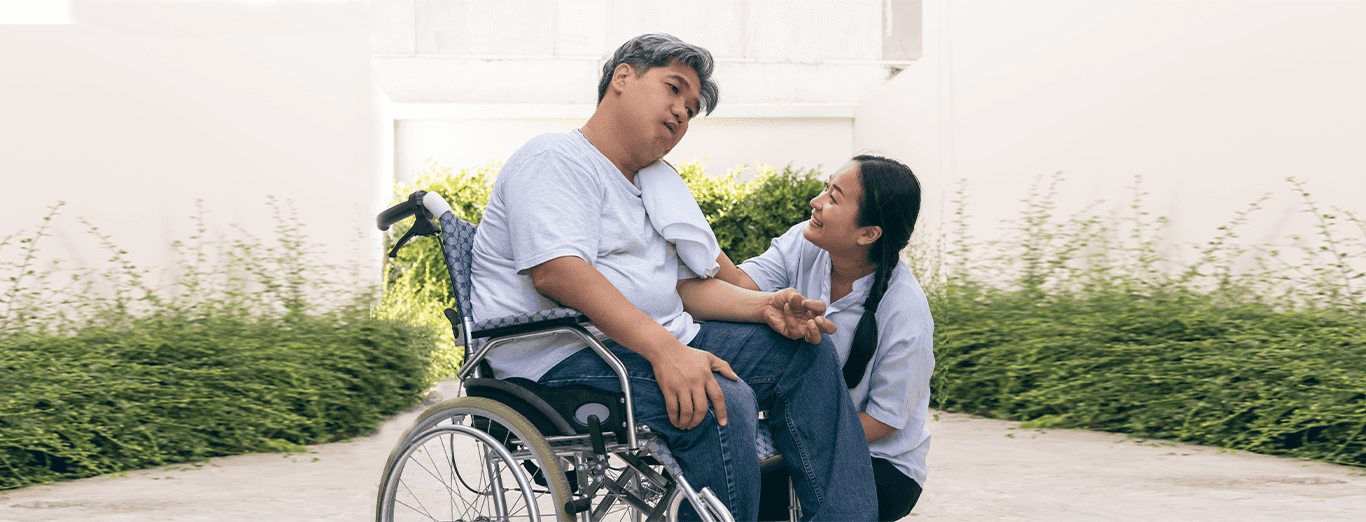
Skilled Nursing, Right at Your Doorstep
Our certified nurses provide professional medical care in the comfort of your home, ensuring you receive hospital-quality treatment without the stress of travel
Comprehensive Care Plans
From post-operative care to chronic condition management, our nursing services are tailored to meet your specific health needs, promoting faster recovery and better outcomes
Trusted Professionals, Compassionate Support
With rigorous training and background checks, our nurses are not only skilled but also empathetic, offering both medical expertise and emotional support
Patient Testimonials
types of cerebral palsy
Cerebral palsy (CP) is a collection of motor issues and physical disorders that stem from abnormal brain development or brain injury and this might happen during foetal growth, at birth time, or in the initial 2 or 3 years of the life of a child. The brain injury that triggers this condition doesn’t worsen over time, however, symptoms may begin, change or turn out to be severe as a kid grows.
Cerebral palsy influences the muscles of a side or part of the body and at times the total body too. Muscle tightness and uncontrolled reflex movements happen with varying severity. Physical issues of this condition range from mild to severe. People who have a severe form of cerebral palsy are likely to possess other issues like intellectual disability or seizures. At times, the exact root cause of this condition is known like when brain damage happens as a result of head injury or serious infection. In several cases, the exact root cause is unknown. Here are some of the cerebral palsy types.
types of cerebral palsy
Spastic cerebral palsy
This is the most common type of cerebral palsy. An individual who suffers from this condition cultivates tight muscles in certain parts of their body that cannot be relaxed. Affected joints turn out to be stiff and very hard to move. Typically, an individual has issues controlling movements, bad coordination and balance, and trouble eating and talking.
There are 4 types of spastic cerebral palsy that are grouped in relation to how many limbs are influenced by the condition.
Hemiplegia or diplegia:
One leg and one arm on the same part of the body (hemiplegia) or both legs (paraplegia or diplegia) are affected. These are the common types.
Monoplegia:
Here, one leg or arm is affected.
Quadriplegia:
Both legs and both arms are affected. Typically the muscles and the trunk that control the tongue, mouth, and windpipe are influenced too. This makes talking and eating difficult. Children with this condition may;
- Have issues swallowing and sucking.
- Have a shrill or weak cry.
- Have a floppy and relaxed body or a stiff body. When you hold them, they might arch the back and extend the legs and arms.
- They may be jittery and irritable when awake. They might startle easily.
- They might sleep more or show very little interest in what’s happening around them.
Triplegia:
This condition involves one leg and both arms or one arm and both legs.
Nonspastic cerebral palsy
The nonspastic types of cerebral palsy incorporate dyskinetic cerebral palsy (further divided into dystonic and athetoid forms) and ataxic cerebral palsy.
Dyskinetic cerebral palsy
This is linked with muscle tone that varies between being tight and loose. In certain cases, jerky and rapid or uncontrolled sluggish continuous movements happen involuntarily. These movements often affect the neck and face, hands, arms, feet, legs, and at times the torso.
Athetoid cerebral palsy
The traits of the athetoid cerebral palsy variety include limp and relaxed muscles during sleep, with involuntary jerking or writhing. If the mouth and face muscles are affected, issues might develop in relation to odd facial expressions, choking when drinking, sucking, and eating.
With dystonic cerebral palsy, the neck and body are held in a very stiff position.
Ataxic cerebral palsy
Ataxic cerebral palsy is the most unusual cerebral palsy type that involves the whole body. Uncharacteristic body movements affect the hands, trunk, legs and arms. Ataxic cerebral palsy causes issues with;
- Balance
- Precise movements – For instance, the individual might reach too close or too far to touch objects and might have bad hand control.
- Coordination – An individual with ataxic cerebral palsy might walk with their feet abnormally far apart.
- Hand control – Often merely one hand can reach for any object while the other one might shake when trying to move it. The individual might not be capable of buttoning their clothes, using a pair of scissors or even writing down something.
Mixed cerebral palsy
Some kids have signs of different types of cerebral palsy. For instance, spastic legs [signs of spastic diplegic cerebral palsy] and issues with muscle control on the face [signs of dyskinetic CP] might both develop. Entire body cerebral palsy influences the total body to a certain degree.
Problems of cerebral palsy and various other medical issues are likely to grow when the whole body is included rather than separate parts. This is called mixed cerebral palsy. Total body cerebral palsy might incorporate any of the following:
- Dyskinetic CP
- Spastic quadriplegic CP
- Ataxic CP
Physiotherapy exercises have been shown to help treat and avoid injuries and pain related to numerous diseases. The physiotherapy experts at Portea help with basic and advanced movement exercises to enhance the mobility of the patient. They visit the patient’s home and treat them at their convenience.
Doctor Consultation
Nursing
Physiotherapy
Trained Attendant
Elder Care
Mother & Baby Care
Lab Tests
Medical Equipment
Speciality Pharma
Critical Care





